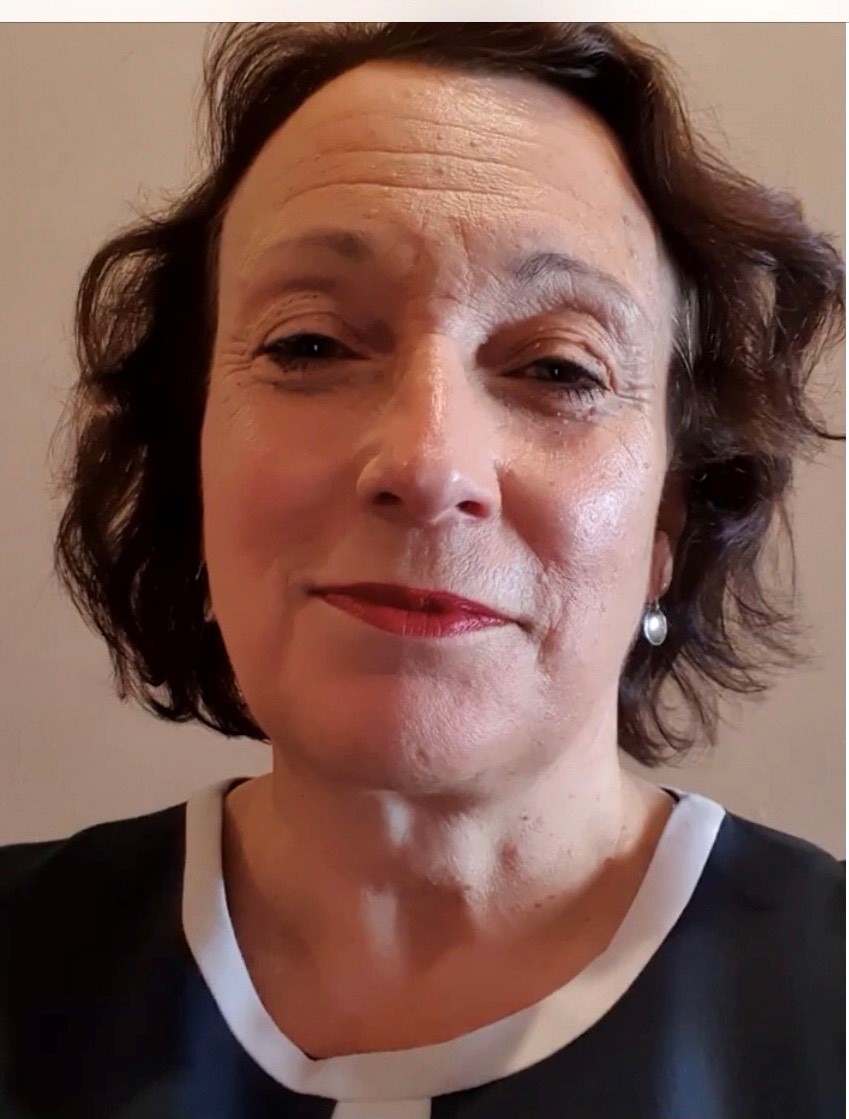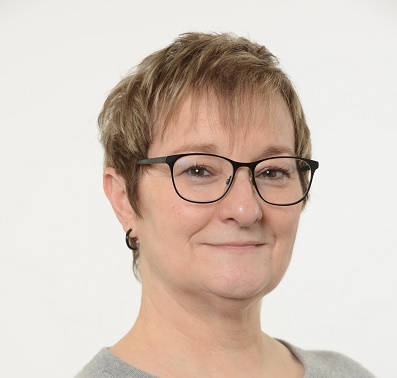As part of your safeguarding subscription, our expert advisers, Jo, Marsha and Lucie are on hand to help answer some of your safeguarding questions. Click on the “Read More” buttons to find out more about them and feel free to send across a question using the form below.
ask the experts
Send your safeguarding questions across to the team using this form and we will do our best to support you, via email.
Your questions will also help us to see any recurring trends and gaps in knowledge, enabling us to create tailored content for you.
When you have submitted your question, look out for a response from safeguarding@servicesforeducation.co.uk

Alternatively, feel free to browse our Frequently Asked Questions below for quick answers to our most commonly asked questions.
FREQUENTLY ASKED QUESTIONS
Browse our Frequently Asked Questions, by topic, using the tabs below. These questions have been collected and answered by our safeguarding team and reflect topics that come up time and time again during training. If your question isn’t covered, please feel free to send it across to us using the form towards the bottom of the page.
Q: Do I have to start my subscription at the start of a term?
You can start your subscription at any time and will have access for 12 calendar months.
Q: How do I add new staff members to the safeguarding subscription?
If you are a Manager of your Safeguarding Subscription Team (IE. if you purchased the subscription or the purchaser made you a manager) you can add staff members to your subscription. Watch this video to find out how.Or please follow these steps:
- Go to “my account” on the Services For Education website and you should see three tabs “My Membership,” “Safeguarding Team” and “My Subscription.”
- The “My Membership” tab will give you access to the safeguarding membership area, *if you have assigned one of the licences to yourself*. If not, you can add yourself via the “Safeguarding Team” tab.
- The “Safeguarding Team” tab will allow you to manage who has access to the Safeguarding Membership area. You can invite people to join, remove people and see whose membership invitation is still pending in this section.
- The “My Subscription” tab will show you more details about your subscription. Here you will be able to renew your subscription towards the end of the year.
Q: Can I view the webinars more than once?
Access is per school so within your individual school you can use all the resources freely for 12 months.
Q: Who are the webinars for?
This subscription is to support the whole school in developing an organisational culture of safeguarding. Different people within the school or setting have different roles. So there is a range of support from training for office staff, teaching staff, pastoral staff, DSLs and governors.
Q: Is it just about staff training?
No. We also wanted to help develop an aspect of safeguarding that many schools find a challenge which is how to teach about FGM, domestic abuse etc. So we have included webinars with ideas and approaches to take to include safeguarding within the curriculum.
Q: How do I use my discounts?
As a member of the Safeguarding Subscription, your school has access to some discounts:
- 2 x 20% discount coupons on Update for Existing DSLs on Safeguarding and Child Protection
- 1 x 20% discount coupon on Safer Recruitment
- Unlimited 20% discount coupons on our Online EYFS Safeguarding Course
Please get in touch with the person who purchased the safeguarding subscription for you before booking any of these courses. They may be able to send you a discount code which can be used at checkout. Or they can book courses on your behalf.
Q: What should a DSL do if an old school does not pass records on within the 5 stated days?
As the DSL you can speak to the DSL at the previous school and remind them that KCSIE says that files should be passed within 5 days. This will also give you a chance to discuss the child/ren where appropriate. If the files are still delayed, you can contact the BCC Safeguarding team for support.
Q: Transferring files from schools to colleges – should safeguarding files have other pupils’ names removed from them before we send the files on?
The file should refer to the individual child only and other names may need to be redacted – however if the other child is going to the same college you may make a judgment call to raise it with the college if there are potential ongoing safeguarding concerns.
Q: As a primary school should the original documents be kept with the school or transferred with the child to the secondary school?
All records should follow the child. When a pupil moves from your school, the child protection and safeguarding records must be forwarded on to the DSL at the new school, with due regard to their confidential nature and in line with current government guidance on the transfer of such records. Direct contact between the two schools may be necessary, especially on transfer from primary to secondary schools or with particularly complex situations. The records should be kept until the child is 25 (Information and Records Management Society (IRMS), 2016). In some cases, records can be kept for longer periods of time, for example, if:
- the records provide information about a child’s personal history, which they might want to access at a later date
- the records have been maintained for the purposes of research
- the information in the records is relevant to legal action that has been started but not finished
- the records have been archived for historical purposes (for example if the records are relevant to legal proceedings involving the organisation). Where there are legal proceedings it is best to seek legal advice about how long to retain your records. Some records are subject to statutory requirements and have a specific retention period.
This includes records relating to:
- children who have been ‘looked after’ by the local authority
- adopted children
- registered foster carers
- residential children’s homes.
You should check the legislation to see which rules apply to your organisation. You should also check whether your insurance company, regulating body or local safeguarding agencies make any stipulations about retention periods. When records are being kept for longer than the recommended period, files must be clearly marked with the reasons for the extension period.
Q: How much information should we be sharing with other staff in a secondary school i.e. teaching staff and form tutors?
Sharing information is always a balancing act. The key principle is what is in the child’s best interests? There are many safeguarding issues that arise across the curriculum on a daily basis (think such as issues of domestic abuse in literature texts for example) and could therefore be triggering to a child. So it is in the child’s best interest for the staff to know in advance to plan proactively, rather than react to a distressing situation or misinterpret the child’s reaction as a behaviour/conduct issue.
Q: We have a child in our school who has siblings at another school. The children were all living with mum but we have found out that the family are all living at dad’s house now but they won’t share this with the other school. The other school has asked us for the sibling’s address – can we give them the address?
In schools we always act in the best interests of the child (KCSIE 2020). It is in the child’s best interest for their school to know where they are, so you need to share the address details with the school of the siblings. The fact that the family do not want to share this with the other school raises additional concerns and this also needs to be discussed between the DSLs in the two schools.
Q: Sometimes children might exhibit sexualised behaviour. How can we work with staff on what is sensory seeking behaviour and what is not?
A key thing to work with staff on is an understanding of what is “age and stage appropriate”. What is typical for a child of that age, but also taking into account any specific needs that child may have. So this means recognising that a child with PMLD might be learning about life at a different timescale than some of their peers, so it’s about knowing what is typical for a child with those additional needs. Some children do display sensory seeking behaviour which can include touching their own genitalia and it is helpful for staff if we have a conversation framework to talk to children (and possibly parents) that staff can use to raise the subject. From there any comment or action of a child can be compared to what you’d expect and a decision made about whether there was a cause for concern. For example, children in the Early Years are learning that boys and girls have different body parts and exploring their own body, so a four-year-old with their hands down their pants might not be a cause for concern. It might be that a conversation is required with the child to explain that such behaviour is something we do not do in public (taking care not to shame the child for natural exploration). However, if a fourteen-year-old was touching their genitalia in public in class it is likely we would have more concerns. Scenario based training for staff can help to create a setting-wide understanding of what would need to be passed on and noted as a safeguarding concern.
Q: Where is the line between a health and safety concern and a safeguarding concern?
Safeguarding is about keeping children (and adults) safe. Therefore a Health and Safety concern might need to be recorded as such in your records, but it can also be something you might fill in a cause for concern form for. A good example would be a child who, whilst on school transport, repeatedly takes off their seatbelt. It is a health and safety concern, but also needs recording as a safeguarding note of concern – does this happen often? Are rules enforced and understood at home? Is there an unresolved reason moving transport doesn’t feel “safe” for a child? Is it a sensory concern? What other information do we hold that might lower or raise our concerns?
Q: How many staff should be safer recruitment trained?
One staff member per interview panel should be safer recruitment trained. The training used to have to be renewed every five years – this is still seen as best practice but the renewal is no longer mandatory. It depends on the size of your organisation and who sits on an interview panel for all roles. It is helpful to have several staff trained in case of absence but also as safer recruitment training is broader than just looking at recruitment – it is also about creating a safer working culture in your setting, so breadth and depth of more senior staff trained to look out for this is key to creating a safer environment for all.
Q: How often do staff need to do the full training and the refresher?
KCSIE 2021 says all staff should receive appropriate safeguarding and child protection training which is regularly updated … at least annually. In addition, all staff should receive safeguarding and child protection updates (via staff meetings, e-bulletins). For DSLs and deputy DSLs (who need to be trained to the same standard) they need to have training that equips them with the knowledge and skills to carry out the role. The training needs to be updated at least every 2 years.
Q: How can we include safeguarding training in staff briefings or meetings?
Some ideas you could try are
- get staff to complete an online questionnaire (which could be anonymous if that helps) then in weekly meetings/briefings just pick one or two questions to cover in more detail
- can choose a topic/aspect of safeguarding and do a quiz on this in the meeting – can be done as teams (similar to a pub quiz format)
- create your own case studies by anonymising a real case that has happened in your setting. You can then work through these in training sessions and stop at certain points and ask staff “what would you do here?”. This is really powerful as some staff might think certain safeguarding issues “don’t happen here” so you can demonstrate that it can and does, so our training and processes need to be updated regularly.
Q: In terms of training, should lunchtime supervisors be included?
Children will disclose to an adult they trust. This is not necessarily always a teaching member of staff, therefore it is best practice to train all staff in safeguarding matters. However, the type and duration of training might vary across staff roles. At the very minimum, lunchtime supervisors need support to recognise signs and symptoms of abuse and know how to communicate with a child in distress and know who to pass concerns on to and in what format.
Q: An issue we’ve had previously is that the correct and consistent message isn’t always cascaded down by staff – so students receive conflicting messages depending on who they hear it from. We have always underlined the importance of everyone “singing from the same hymn sheet” when we do our training to other staff, but I wondered if you had any thoughts on how we can promote or even enforce the need for consistency in terms of what staff pass on to students?
Consistency of approach is a key part of how we can keep children safe. There are several options · Asking the staff who are not complying as to why they are not complying? Is it naivety or deliberate? This will then frame how you approach this issue · Use anonymised case studies to work through various scenarios including times of where or how an inconsistent approach could have increased the risks to a child.
Q: When speaking to children (in relation to child protection), what is the biggest mistake schools make?
Staff are there to listen and ask enough questions to ascertain if there is a child protection concern. The best value account is a “free narrative” where the child has been allowed to give a full uninterrupted account, staff using the Tell, Explain, Describe type questions or possibly, open questions (who, where, when, what, how) to structure it. Sometimes well-meaning staff can use leading questions which are of limited value and can cause problems with a defence barrister if the matter goes to court.
Q: Some children prefer to write than speak, perhaps due to feelings of shame. What would you suggest in this instance?
If children are giving evidence which may be used in criminal court proceedings, they will get Special Measures, which will usually include giving video evidence (Achieving Best Evidence – ABE). Therefore, a written account is not necessary and can be problematic as the child may have mentioned slightly different things in the two accounts. As professionals we ask enough open questions to ascertain if there is a concern, then pass it on. If a child has independently produced written or pictorial evidence, the police will require the originals.
Q: If a child has cognition and learning difficulties and they make a child protection disclosure, will this be used in a court? And how?
Children who are witnesses in criminal proceedings are entitled to a variety of special measures. This includes things like the main evidence being pre-recorded video evidence (ABEs). If a child has to give evidence or be cross examined in the court room, special measures can include being screened or giving evidence via video-link and also an intermediary being appointed who assesses the child to ensure that questions asked use language that matches the child’s cognitive understanding.
Q: How can we improve consistency of staff completing incident report forms?
Whichever system you use (paper based or electronic) you can see who has and hasn’t logged an incident or asks someone else to log it. You can have conversations with these staff who don’t log incidents – is it lack of confidence in how to complete a form? Or lack of confidence as to what happens with that information (for example; will the parents get to know they’ve reported something? which might be very relevant for staff who live within the local community). Then you can get them to practice completing an incident report form (maybe using an example case study). This could also be used in staff training.In large schools, especially secondary schools, you could also look at the number of referrals for each faculty over the term. This can be shared at leadership e.g. maths faculty make 2 referrals but English make 62 referrals. This really gets faculty leaders checking on their own faculty team’s understanding of how to make a referral to the safeguarding team.
Q: How can we give appropriate feedback for staff on the outcome of concerns they have raised whilst still keeping confidentiality?
The DSL could compile a regular report from concerns raised which can be discussed, as appropriate, at staff meetings to include range of concerns. This can also link with developing case studies for staff to work on.
Q: Is it acceptable to ask for cover when you are dealing with a child protection case and you know that you need to see it through as the relationship with the student is good.
The answer to this will lie with individual settings and their policy. However, children disclose to a person they trust – so if a child is mid-disclosure it is best practice that the staff member is able to continue working with the child at this moment. In terms of attending inter-agency meetings, it is often more helpful if the staff member who attends knows the child and the situation in detail, rather than someone attending who is “free” at that time, but they are reliant on reading out a report written by another staff member.
Q: How should it be decided who reads which parts of KCSIE? How should governors know who needs to read what?
Since 2021 KCSIE has given governors the option of allowing some staff, who do not have regular and direct contact with children, to read a shorter version of Part 1, contained in Annex A. The thinking is that for some staff who do not have such regular close contact and therefore may not be working with disclosures regularly, some information is better than staff not taking in the full information. However, consistency is also very important and so schools should consider whether more information is better than less and ensuring there are no “weak links” in knowledge is important. Ultimately it is up to the governing body or equivalent.
Q: How can we work with the safeguarding governor?
There is a Good Practice Guide on this to help you think through how to best work with your safeguarding governor. It is worth inviting your SG Governor to the school and meet the wider safeguarding team and also safeguarding walks work well to help give them an idea of context.
Q: You mentioned governors should be informed of number of safeguarding incidents recorded in school on a regular basis. Does this apply to network activity/captions via SmoothWall (Policy Central/Futures Cloud) too? And if so, how often should we feedback to governors?
This can form part of the safeguarding report as online safety is important factor especially in risks of exploitation, radicalisation as well as other aspects of child welfare and safety. So, the frequency of the feedback will be in line with your safeguarding report.N.B. Smoothwall (formerly known as Policy Central/Futures Cloud) is a classroom/whole school management tool used to capture potential inappropriate use of school equipment, online grooming, bullying, radicalisation etc on PCs, iPads, laptops, etc. It scans the screen and keyboard strokes based on a bank of words. For example, if someone was to type the word ‘bully’ or access inappropriate content online, the app would take a screenshot against the device, user, date and time. Someone would then review this screenshot, grade accordingly based in the severity (or not) and report to the relevant member of staff in school – Head Teacher, lead DSL, class teacher, etc.
Q: What are governors realistically allowed to ask for or see in terms of safeguarding incidents?
It is useful for them to see collated logs of types of incident (e.g. domestic abuse, bullying) so they are able to appreciate trends in data etc. However, you should not share specific incidences relating to individual children, even if anonymised.
Q: If a child has separated parents, but one parent says the other cannot collect (even though they have PR) what can the school do?
If a parent has parental responsibility, the school are not able to stop that parent collecting the child. This will only be the case if a court order is present, which states that the other parent is not permitted to collect.
Q: A teacher is concerned about a pupil’s significant weight loss/weight gain – how is this best approached with parents?
This is where building relationships with parents is key. Parents need to feel that you are coming from a place of support, not judgement. Arrange a face-to-face meeting with the parents and explain your concerns clearly. It may be beneficial to have more than one member of staff present. Prepare some actions/support measures to give to the parents so they know that you are on their side. If parents are defensive or will not accept concerns, keep monitoring the situation and refer to your local threshold document as to when you may need to make a referral or seek external support.
Q: Is there an age at which a young person could want something different in terms of consent to what their parent/carer has given? The Covid vaccination is a current example but are there examples around RSHE lessons too?
In terms of sex education, parents can request their child is withdrawn until three terms before the child turns 16 – at that point children can opt-in themselves even if their parents do not agree. In terms of medical issues (often the prescribing of contraception for under 16s or recently the Covid-19 vaccination) there is a discussion between the medically qualified professional and the child. If the child is deemed competent to understand the issues involved and any potential repercussions or side effects of any treatment etc. then the child may be entitled to make decisions themselves – this is often called the Gillick competency test but refers mainly to medical situations. Once children turn 16 their voice is afforded more weight in many decisions in their lives, despite legally being children until they are 18.
Q: Does consent from a parent always need a signature?
Written consent is preferable – as it is harder for someone to retract or deny it. This means help for a child is more easily accessed. However if you can only get verbal consent, it is still consent. Best practice in that case is to inform the person with parental responsibility who has given consent that you are going to record that they gave verbal consent and sign and date it yourself. If someone else witnessed this, they can also record they witnessed verbal consent being given. Remember you only need consent from one person with parental responsibility and you do not need consent if you have grounds to believe that by seeking consent you would put the child at further risk of significant harm.
Q: When contacting parents – what do we do if parents do not respond?
You need to consider:
- Why are you contacting the parents?
- Do you have contact details for each parent and neither has responded?
- Does the lack of response mean that your concerns about the child have increased? If so, what is the next step? Is it to contact other agencies such as social services and/or police?
Q: Do you know of any good concise information we can send out to parents about online safety?
There are several organisations that provide resources for parents including:
Q: Do DSLs require supervision? How can schools access this?
Working Together to Safeguard Children 2018 does talk of the benefits of staff receiving supervision – but this is based on a health care or social care model and not specifically directed at the Education Sector. KCSIE 2022 still does not make supervision a mandatory requirement, though it alludes to the benefits of such practice. Recent Child Safeguarding Practice Reviews (for example the joint review of the cases of Star Hobson and Arthur Labinjo Hughes) have mentioned the benefits of such a system.
Schools can choose to develop their own internal supervision processes or to pay for independent support. Any search engine can tell you what is available in your area.
It is important to consider what approach you want – often an approach based more in coaching, rather than as part of performance management can be helpful.
Q: Can I ask if the senior DSL MUST be the HT please?
KCSIE 2020 is clear that the lead DSL must be a senior member of the leadership team but it does not have to be the headteacher. Whoever is the DSL takes lead responsibility for safeguarding and child protection and this must be explicit in their job description.
Q: What should schools do if they feel that social services have not made the right decision or actions taken are not deemed enough?
If you have made a request for support/referral and it has not progressed to s47 enquiries but you feel that the situation is one of significant harm, you can rerefer with any additional information you did not originally pass on. Ensure you are using the language of the Threshold Document (Right Help Right Time) to ensure that the language speaks of the layer of need you believe the child is experiencing. If you need to use the Escalation Protocol – found on the LCSP website. The situation will be looked at by a social care professional in a more senior role. Fresh eyes can mean a decision is altered.
Q: Can CP be downgraded to CIN?
A Child Protection Plan can be converted to a Child in Need plan in certain circumstances. This might happen at a Review Conference if it can be evidenced that the risks to the child have started to diminish and key issues have been resolved, or possibly if there are other real strengths or changes in the family situation now which act as more protective factors.
Q: How long does the referral process usually take?
It depends exactly what you mean by “the referral process”. If you make phone contact with MASH over a concern of significant harm, the agencies that form the MASH have a duty to search their databases within a few hours. If a Request for Support Form and subsequent investigation suggests action needs to be taken immediately to ensure the child’s safety – then that is what happens. This can lead to a strategy discussion within 48 hours. However the process might take longer in cases of less obvious emergency or where there is a situation of a contextual safeguarding nature where the home might be a place of safety. Also please remember that the police are an emergency safeguarding response where needed.
Q: What can you do if you feel a social worker does not follow something through and the child may still be in danger?
If you have any concern about action or inaction in a child protection case involving Children’s Social Care there is the Escalation Procedure, where decisions can be looked at again. All Local Safeguarding Children Partnership’s will have an escalation protocol (sometimes called Professional Disagreements) which you can find on their website and then follow your local process. Information for Birmingham is available here: Birmingham Safeguarding Children Partnership Procedures and Practice Standards (bullet point 4 under Inter-Agency Protocols heading).
Q: Does teaching about consent come under sex education or relationships education?
Consent is not just a sexual topic. We teach EYFS children about consent for not snatching toys away from another child. We can (and should) model consent as part of healthy relationships throughout our working day – for example asking a child for their permission to display a piece of their work on the wall. This normalises consent and then when it is raised as part of a RSHE topic specifically as “sex education” it is a concept that is understood. Parents can withdraw from sex education outside of national curriculum science at primary school and at secondary school only up to three terms before a child is 16, then a child can opt in themselves if they so wish. Lots of elements of teaching of fully informed consent are part of relationships education – parents have no right of withdrawal of this.
Q: Is it good practice to add safeguarding questions or things to discuss on to curriculum webs for each year group?
Safeguarding needs to be an integral part of the curriculum so this would be a good idea. You also need to be mindful of those aspects of the curriculum that might be challenging or upsetting to children.
EXTERNAL CONTRIBUTORS
In addition to the content created by our fantastic internal safeguarding team at Services For Education, you also have access to content from a number of external contributors, including leading experts in the field of safeguarding and previous members of the team. You can find out more about their experience and expertise below.














